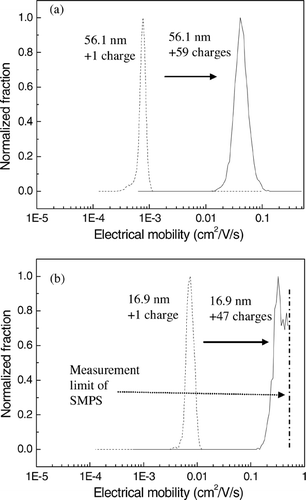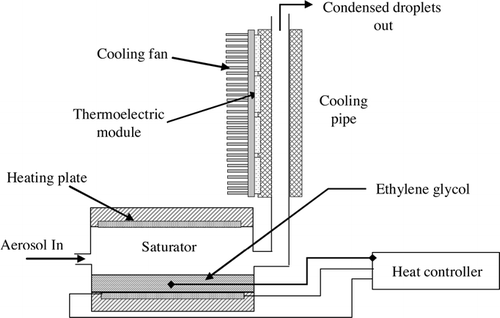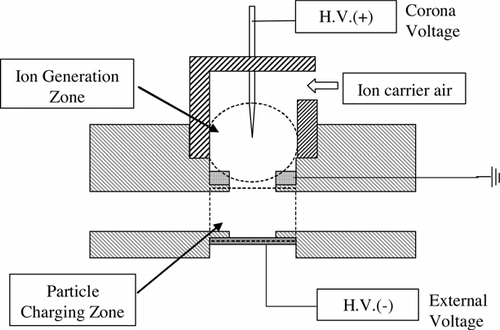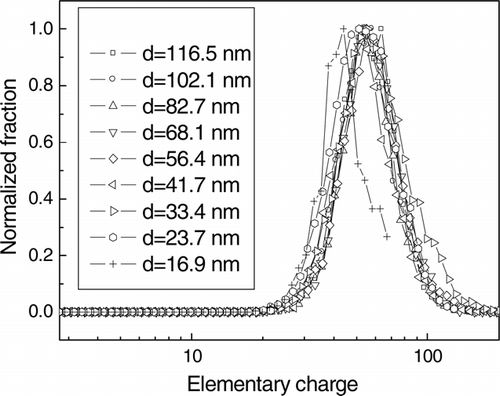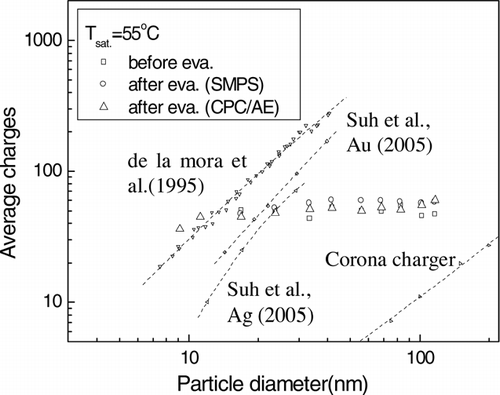Figures & data
FIG. 1 Experimental setup for measuring (a) the size distribution of classified and evaporated particles and condensed droplets by SMPS spectrometer and Aerosizer (b) and measuring the total charge, number concentration and electrical mobility distribution of highly-charged particles by aerosol electrometer, CPC and SMPS spectrometer.
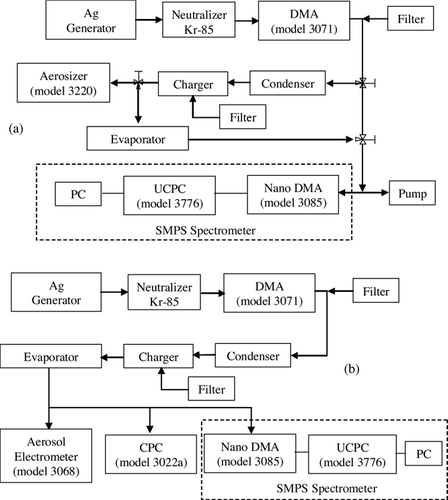
FIG. 4 (a) The aerodynamic mean diameter (b) and GSD of the condensed droplets, as a function of the diameter of classified particles.
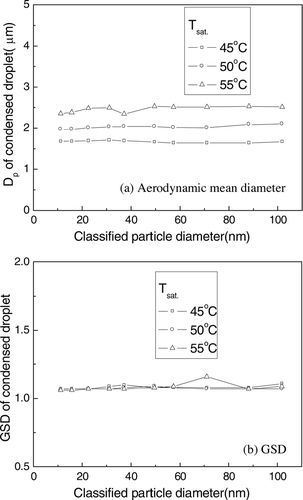
FIG. 5 The geometric mean diameter and GSD of evaporated particles with the temperature of the evaporator, when the temperature of the saturator was 45° C, 50° C, and 55° C.

FIG. 6 (a) Comparison of the geometric mean diameter (b) and GSD of evaporated particles with that of classified particles and (c) the error when the temperature of the saturator was 45° C, 50° C, and 55° C.
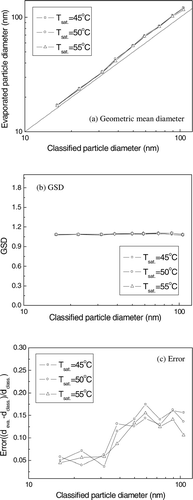
FIG. 7 The average charge of particles with corona voltage and external voltage, which was calculated by dividing the total charge by the number concentration (which were measured by using aerosol electrometer and CPC), when the diameter of the classified particle was 22.4 nm and the temperature of the saturator was 55° C.
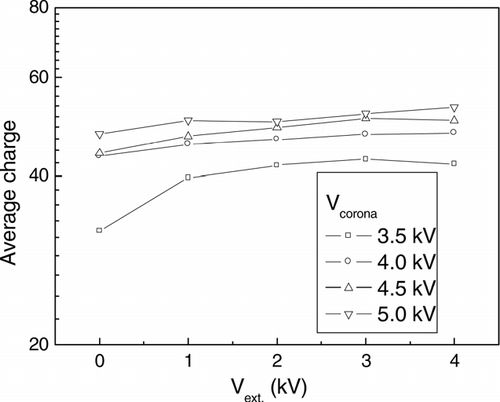
FIG. 8 The average charge, which was calculated by dividing the total charge by the number concentration (which were measured by aerosol electrometer and CPC) of the evaporated particles, when the temperature of the saturator was 45° C, 50° C and 55° C.
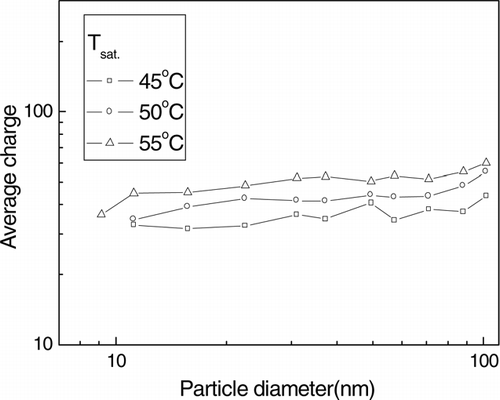
FIG. 9 Comparison of the average charges, which was calculated in two ways, SMSP and aerosol electrometer(AE)/CPC, for several charging conditions when the diameter of the particles was 16.9 nm, 23.7 nm, 33.4 nm, and 51.4 nm, when the corona voltage and external voltage were +4 kV and −1 kV, respectively and the temperature of the saturator was 55° C.
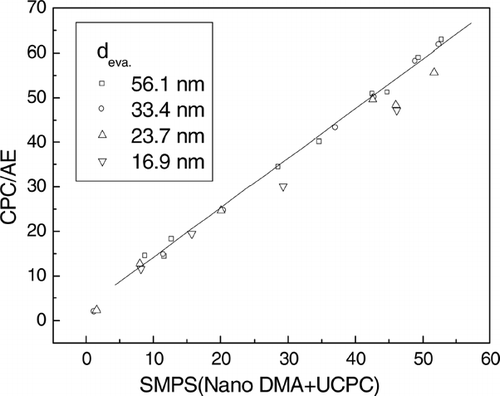
FIG. 10 The shift of the electrical mobility distribution of highly-charged particles compared with evaporated particles with a charge of +1 when the diameter of the evaporated particles was (a) 56.4 nm (b) and 16.9 nm when the corona voltage and external voltage were +4 kV and −1 kV, respectively, and the temperature of the saturator was 55° C.
